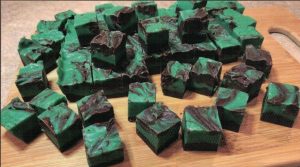White coat syndrome
Walking into the doctor’s office for the first time can always be nerve wracking. The sitting, waiting, and filling out paperwork can build up anxiety. Apprehension grows even more when you are trying alternative methods to traditional medicine and they are under such great debate, namely, medical cannabis.
We're here to help
As a physician, my goal is to give the general public and prospective patients a clear understanding of what to expect when seeking certification in utilizing medicinal cannabis or in obtaining information about the process; and that is that as physicians, we are here to help you in an open -minded environment. Patients can anticipate engaging in informative and non-judgmental discussions with physicians and medical staff. The immoral stigma that society has placed on the use of medicinal cannabis will slowly dissipate and in its place a sense of comfort will fill the gaps of uncertainty the patient had once their questions are met with answers. Ultimately, we are here to discuss the medical benefits of cannabis and how it fits your specific medical needs.
The process
The certification process should also not be stressful. When you arrive, yes, there will be some paperwork, but it is for your benefit. This information enhances the physician’s ability to comprehend your particular medical needs. Just a glance at the patient’s preliminary history and documentation will allow us to formulate the modes of delivery that will be better tailored for you.
“Modes of delivery” simply means how medical cannabis is introduced into the body, including vape, oral, sublingual, topical, and rectal. We will also assess your current medications to make sure there will be no potential negative will refer to a patient’s prior use of, “recreational marijuana:’ This is completely customary and should not cause a patient to be alarmed, for we will not be calling law enforcement. This simply helps us gauge what the necessary dosage will be. The key point is that physicians are here to assist patients in managing their use of medicinal cannabis and not passing judgment.
Inquiry about a previous cannabis exposure also allows physicians to measure a patient’s tolerance and their previous level of use so that they may recommend the correct amount of milligrams and a method of delivery that would be most appropriate for you. The philosophy of “go low and slow” holds true in recommending medical cannabis, particularly with patients who are THC naïve, and are not familiar with some of the effects associated with medical cannabis or cannabis at all.
It is through this part of the physician’s assessment that he or she can better educate the patient on possible effects and what to expect if there has been no previous cannabis use. On the other hand, a patient who has used marijuana recreationally and has built tolerance may require a higher entry point of dosage. The physician will then need to scale the medical dosage appropriately to meet the patient’s needs.
Closing thoughts
There is a growing acceptance, accessibility, and use of cannabis in the general population. As physicians, we are here to guide individuals and empower our patients as they make the choice to use medical cannabis. It is our job to facilitate answers as to when, where, and how to use it safely and effectively for a therapeutic purpose. It is important for potential patients to know that our utmost important message is that we are here to provide assistance and care in a positive environment.





